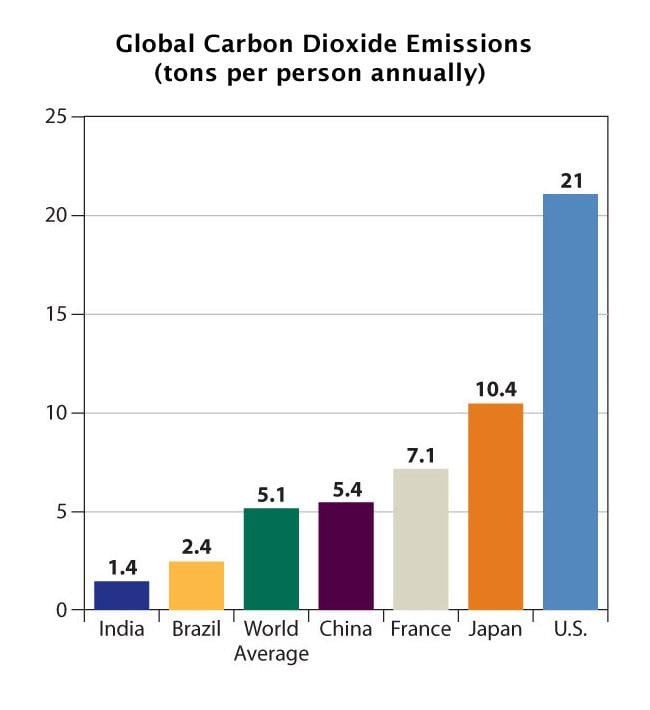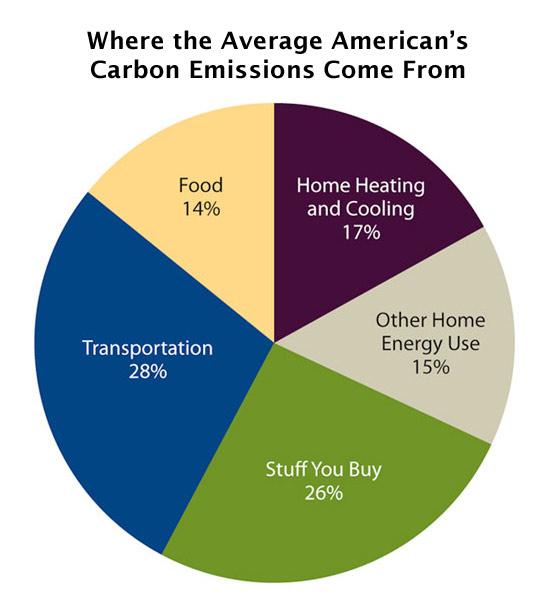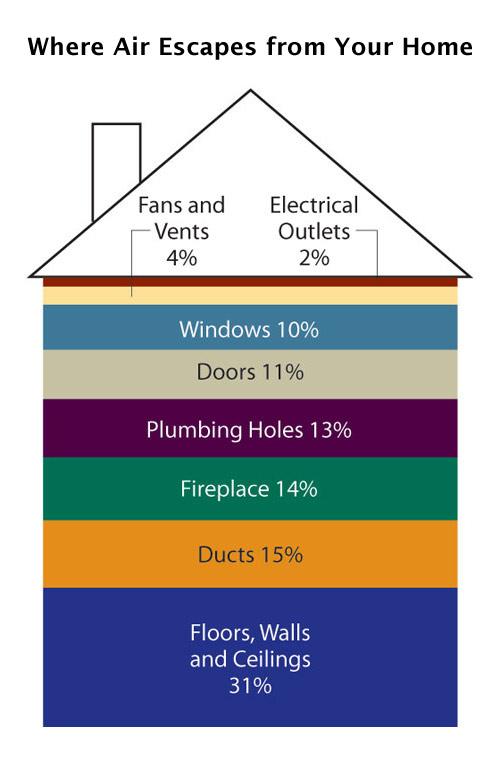Do you love data? So do we.
To figure out what parts of our lives have the greatest impact on global warming, our experts conducted two years of in-depth research using a computer model that tracked emissions in 500 separate spending categories. The purpose of this research is to help you understand which daily decisions matter the most for your emissions and which ones you really don’t need to worry too much about.
We analyzed the climate impacts of consumer decisions ranging from insulating your home to changing your diet. And we measured the direct and indirect emissions caused by everything from going to the doctor to eating out at a restaurant to remodeling your home. (You can see our results summarized in two tables showing production, use, disposal and total U.S. emissions by category or average emissions per household).

So, how much do we emit?
On average, the activities of each US resident add some 21 tons of heat-trapping carbon dioxide to the atmosphere each year. Twenty-one tons is a hard number to get one’s head around, so think of it this way: That’s more carbon dioxide than you would cause by driving an average car all the way around the world at the equator. As people living in the United States, we have per-person emissions four times the global average and twice that of other countries with a similar standard of living to our own, such as France and Japan. That means there’s lots of room for improvement.
What does "Tons of Carbon" mean?
All discussions of emissions, unless otherwise noted, use pounds and tons (2,000 pounds in a ton)—the most familiar units of measurement to most U.S. readers.
Similarly, discussions of “carbon emissions” or “carbon dioxide” refer to emissions of units of “carbon dioxide equivalent” (CO2e). This term takes into account the potency of various heat-trapping gases such as methane and nitrous oxide and converts their total global warming impact to an equivalent mass of CO2, the most prevalent heat-trapping gas.

Emissions come from five key areas of our lives
In order to reduce our emissions most effectively, we need to know where they come from. Our study shows that our emissions come from five areas: transportation, heating/cooling your home, appliances and other energy users in your home, your food, and all the stuff you buy.

Transportation is the biggest area, and the vast majority comes from cars and trucks. For almost all of us, our cars are the single biggest personal contribution to climate change. That means when it comes time to buy your next car, choosing one with the best possible gas mileage that meets your family’s needs offers one of your biggest opportunities to cut emissions.

Home heating and cooling is another important area. Upgrading your furnace or air conditioners to highly efficient models can make a big difference in reducing your emissions. So can sealing air leaks, because air leaks in the average US home may squander 15 to 25 percent of the heat our furnaces generate in winter and account for the same amount of unwanted heat our homes gain in summer. That’s equivalent to leaving a window in your home wide open all the time.

Home energy use from all the electricity we use to power our appliances and electronics is another big source of your emissions, and one with lots of room for reductions. For example, compact fluorescent and LED bulbs give you the same amount of light while using one quarter of the electricity or less. So you’d have to shut off your incandescent bulbs entirely for three out of every four days to achieve comparable savings. Cooler Smarter offers lots of specific tips and strategies for reducing your electricity consumption.

Food accounts for a sizable portion of our emissions. Of course, we all must eat. But, if you want to make cuts here, your best option is to reduce your consumption of meat, especially beef. That’s because a pound of beef is responsible for some EIGHTEEN TIMES the emissions of a pound of pasta. An average family of four that decides to cut their meat intake in half could avoid roughly three tons of emissions annually.

Stuff we buy—from tangible items like clothes and furniture to services like haircuts and healthcare—accounts for the remainder of our personal emissions. These purchases are spread across so many categories it is hard to get significant reductions from a single choice. That said, simply buying less stuff or purchasing recycled or reclaimed items can significantly trim your personal emissions.
How do I know I’ll get either the potential or average savings you describe in the 20/20/20 challenge?
Great question! You’ve noticed something really important: that none of us is average. We all have different circumstances—we drive more or less than average, some of us live in big houses in the suburbs, others in tiny apartments in the city, etc.
But even if your circumstances differ somewhat from the norm, the suggestions in the 20/20/20 challenge are still likely to identify the key areas where you can find the biggest emissions savings. That’s because we designed the challenge to focus on the many things most of us do have in common, such as the fact that most of us drive, eat, and live in homes with heating, cooling, and electricity.
That said, knowledge is power. If you know you drive a lot more than the average person, focus more of your attention on that area. If you are planning to remodel your home, you’ll find that Cooler Smarter offers a lot of advice for how you can meet and exceed the 20-percent challenge and lock in reductions in your emissions for decades to come.
Meanwhile, if you are a data hound and are inspired to more precisely track your personal 20 percent reductions, go for it! One comprehensive emission calculator is the one developed for the U.S. Department of Energy by Lawrence Berkeley Laboratory. You’ll need your energy bills and some other key data about your driving habits and home—so gather your materials and GEEK OUT!



